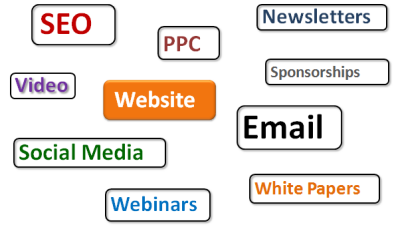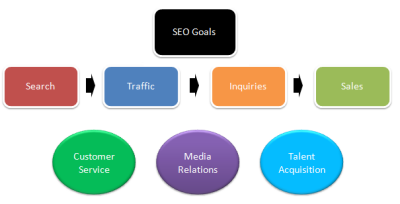 B2B marketers have always been in the business of “content marketing” with white papers, case studies, webinars, demos, free consultations, ebooks and the like. Longer sales cycles due to more complex products and services and business purchasing processes often require more information. The content used to educate buyers of B2B products and services can be a very valuable asset when it comes to content optimization and acquiring leads via organic search.
B2B marketers have always been in the business of “content marketing” with white papers, case studies, webinars, demos, free consultations, ebooks and the like. Longer sales cycles due to more complex products and services and business purchasing processes often require more information. The content used to educate buyers of B2B products and services can be a very valuable asset when it comes to content optimization and acquiring leads via organic search.
When assessing B2B client resources for optimization, most marketers focus on web pages and increasingly, digital assets and social media content. Web pages are more often directly linked to by other sites vs images or video, so it makes sense to start optimizing a B2B site’s web pages. The operative word in that last sentence is “start”.
Asking the right questions when sourcing content for search engine and social media optimization can reveal substantial assets that many marketers didn’t even think of using. Here are a few of the most important questions to ask (and get answers to:)
- How many web pages are published on the corporate domain name?
- How many pages are actually getting indexed and included in SERPs by search engines? (reconcile the difference and fix)
- How many and what type of images are being published ON the corporate domain name? How many off site?
- How many and what type of videos are being published on the corporate site? How many off site? How many off site?
- How many and what type of audio are being published on the corporate site? How many off site?
It’s also important to look at other file types that could be potential entry points for search:
- How many blogs published on the corporate domain name? Sub domain? Different domain name? Third party domain?
- How many and what topics of PDF files are published on the corporate domain name? How many off site?
- How many and what topics of Microsoft Office files are published on the corporate domain name? How many off site?

Identifying topics related to these different types of content and media for optimization will give you a better picture of what you have to work with. It’s helpful to know what types of documents or information is published as you build out your content strategy and optimization plan.
- Case studies
- White papers
- Product or service specifications
- Testimonials
- Newsletters
- Press releases
- Product demos
- Frequently asked questions, knowledegebase
- PowerPoint presentations
- eBooks
- Rich media apps, games or interactive tools
- User generated content, either raw or aggregated according to topic
- Blog content, blog comments, other corporate social participation on the web (Ex: Twitter) – again, either raw or aggregated by topic
Of course there are many others for B2B marketers that have made any kind of commitment to content. Once there’s a clearer picture of what content and media assets there are to work with, they can be mapped by keyword topic.
Some content types deserve focused keyword optimization and link building attention. Others really only need the benefit of process driven or template level SEO . By process driven, I mean training content producers within the company on using keyword glossaries to guide their word choices when creating web pages or other types of content. By template level SEO, I mean modifications to the web site templates that are used with the content management system to dynamically populate keywords in title tags, image alt text, breadcrumb navigation and similar locations. Automating such SEO tasks can propagate to most or all of an entire website, whether it’s 100 or 10,000 pages.

While most B2B Search Engine Optimization efforts are focused on marketing activities that drive leads and sales, working holistically with SEO can deliver benefits that increase value or reduce costs in other areas of the company as well. Optimizing FAQ’s and product support information can provide answers to customers before they call support. Optimizing news related content such as press releases and images can attract journalists to use the company in a story. Optimizing blog content that humanizes the company and gives insight into the culture as well as optimized job listings can make it easier for qualified candidates to find open positions.
I’ll be talking about these topics and more at the MarketingProfs B2B Forum in Boston tomorrow at 1:45-3pm in a session called, Content SEO: Best Practices and What to Avoid. TopRank SEO client, Jiyan Wei from Vocus will present a case study of how they’ve used and advanced their SEO efforts with the 500,000 press releases hosted on PRWeb. There will also be a special handout (small book) provided of the presentation with additional SEO resources available to the first 50 attendees. We hope to see you there!


